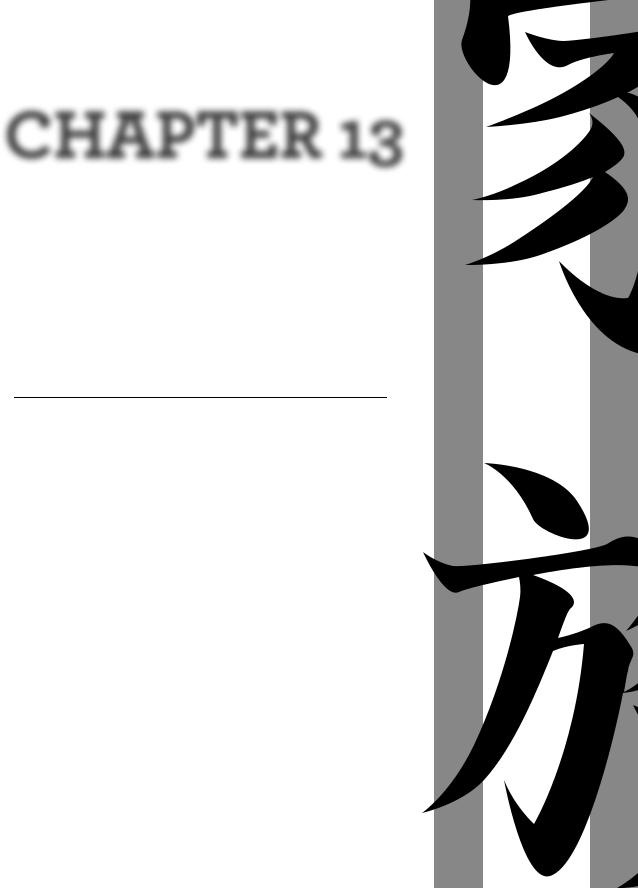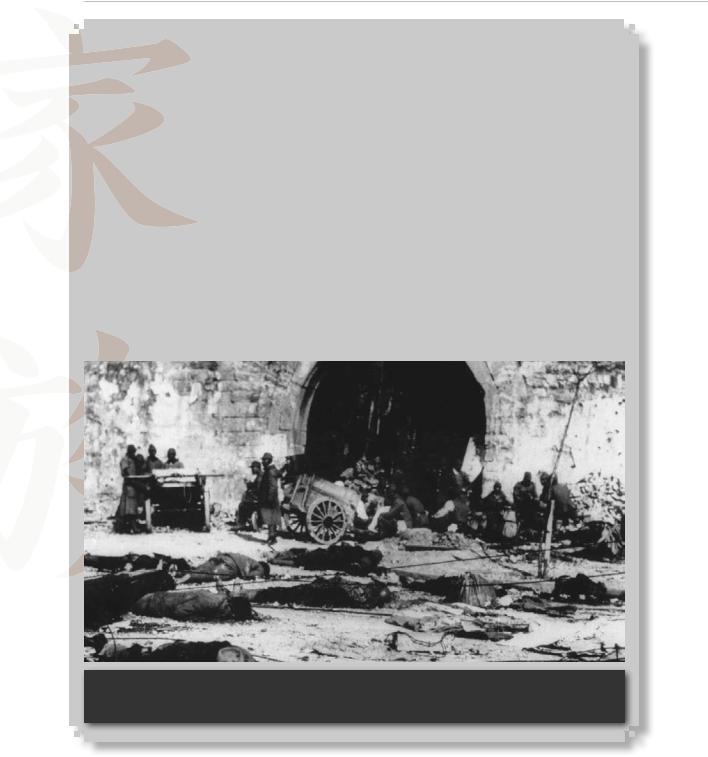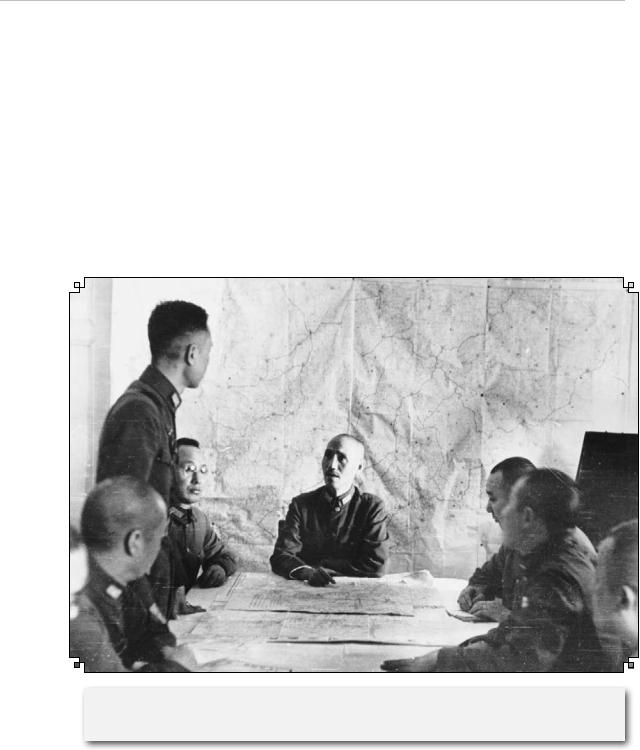
- •CONTENTS
- •INTRODUCTION
- •PREHISTORY
- •EARLY HUMANS
- •NEOLITHIC PERIOD
- •CLIMATE AND ENVIRONMENT
- •FOOD PRODUCTION
- •MAJOR CULTURES AND SITES
- •INCIPIENT NEOLITHIC
- •THE FIRST HISTORICAL DYNASTY: THE SHANG
- •THE SHANG DYNASTY
- •THE HISTORY OF THE ZHOU (1046–256 BC)
- •THE ZHOU FEUDAL SYSTEM
- •SOCIAL, POLITICAL, AND CULTURAL CHANGES
- •THE DECLINE OF FEUDALISM
- •THE RISE OF MONARCHY
- •ECONOMIC DEVELOPMENT
- •CULTURAL CHANGE
- •THE QIN EMPIRE (221–207 BC)
- •THE QIN STATE
- •STRUGGLE FOR POWER
- •THE EMPIRE
- •DYNASTIC AUTHORITY AND THE SUCCESSION OF EMPERORS
- •XI (WESTERN) HAN
- •DONG (EASTERN) HAN
- •THE ADMINISTRATION OF THE HAN EMPIRE
- •THE ARMED FORCES
- •THE PRACTICE OF GOVERNMENT
- •RELATIONS WITH OTHER PEOPLES
- •CULTURAL DEVELOPMENTS
- •THE DIVISION OF CHINA
- •DAOISM
- •BUDDHISM
- •THE SUI DYNASTY
- •INTEGRATION OF THE SOUTH
- •EARLY TANG (618–626)
- •ADMINISTRATION OF THE STATE
- •FISCAL AND LEGAL SYSTEM
- •THE PERIOD OF TANG POWER (626–755)
- •RISE OF THE EMPRESS WUHOU
- •PROSPERITY AND PROGRESS
- •MILITARY REORGANIZATION
- •LATE TANG (755–907)
- •PROVINCIAL SEPARATISM
- •CULTURAL DEVELOPMENTS
- •THE INFLUENCE OF BUDDHISM
- •TRENDS IN THE ARTS
- •SOCIAL CHANGE
- •DECLINE OF THE ARISTOCRACY
- •POPULATION MOVEMENTS
- •GROWTH OF THE ECONOMY
- •THE WUDAI (FIVE DYNASTIES)
- •THE SHIGUO (TEN KINGDOMS)
- •BARBARIAN DYNASTIES
- •THE TANGUT
- •THE KHITAN
- •THE JUCHEN
- •BEI (NORTHERN) SONG (960–1127)
- •UNIFICATION
- •CONSOLIDATION
- •REFORMS
- •DECLINE AND FALL
- •SURVIVAL AND CONSOLIDATION
- •RELATIONS WITH THE JUCHEN
- •THE COURT’S RELATIONS WITH THE BUREAUCRACY
- •THE CHIEF COUNCILLORS
- •THE BUREAUCRATIC STYLE
- •THE CLERICAL STAFF
- •SONG CULTURE
- •INVASION OF THE JIN STATE
- •INVASION OF THE SONG STATE
- •CHINA UNDER THE MONGOLS
- •YUAN CHINA AND THE WEST
- •THE END OF MONGOL RULE
- •POLITICAL HISTORY
- •THE DYNASTY’S FOUNDER
- •THE DYNASTIC SUCCESSION
- •LOCAL GOVERNMENT
- •CENTRAL GOVERNMENT
- •LATER INNOVATIONS
- •FOREIGN RELATIONS
- •ECONOMIC POLICY AND DEVELOPMENTS
- •POPULATION
- •AGRICULTURE
- •TAXATION
- •COINAGE
- •CULTURE
- •PHILOSOPHY AND RELIGION
- •FINE ARTS
- •LITERATURE AND SCHOLARSHIP
- •THE RISE OF THE MANCHU
- •THE QING EMPIRE
- •POLITICAL INSTITUTIONS
- •FOREIGN RELATIONS
- •ECONOMIC DEVELOPMENT
- •QING SOCIETY
- •SOCIAL ORGANIZATION
- •STATE AND SOCIETY
- •TRENDS IN THE EARLY QING
- •POPULAR UPRISING
- •THE TAIPING REBELLION
- •THE NIAN REBELLION
- •MUSLIM REBELLIONS
- •EFFECTS OF THE REBELLIONS
- •INDUSTRIALIZATION FOR “SELF-STRENGTHENING”
- •CHANGES IN OUTLYING AREAS
- •EAST TURKISTAN
- •TIBET AND NEPAL
- •MYANMAR (BURMA)
- •VIETNAM
- •JAPAN AND THE RYUKYU ISLANDS
- •REFORM AND UPHEAVAL
- •THE BOXER REBELLION
- •REFORMIST AND REVOLUTIONIST MOVEMENTS AT THE END OF THE DYNASTY
- •EARLY POWER STRUGGLES
- •CHINA IN WORLD WAR I
- •INTELLECTUAL MOVEMENTS
- •THE INTERWAR YEARS (1920–37)
- •REACTIONS TO WARLORDS AND FOREIGNERS
- •THE EARLY SINO-JAPANESE WAR
- •PHASE ONE
- •U.S. AID TO CHINA
- •NATIONALIST DETERIORATION
- •COMMUNIST GROWTH
- •EFFORTS TO PREVENT CIVIL WAR
- •CIVIL WAR (1945–49)
- •A RACE FOR TERRITORY
- •THE TIDE BEGINS TO SHIFT
- •COMMUNIST VICTORY
- •RECONSTRUCTION AND CONSOLIDATION, 1949–52
- •THE TRANSITION TO SOCIALISM, 1953–57
- •RURAL COLLECTIVIZATION
- •URBAN SOCIALIST CHANGES
- •POLITICAL DEVELOPMENTS
- •FOREIGN POLICY
- •NEW DIRECTIONS IN NATIONAL POLICY, 1958–61
- •READJUSTMENT AND REACTION, 1961–65
- •THE CULTURAL REVOLUTION, 1966–76
- •ATTACKS ON CULTURAL FIGURES
- •ATTACKS ON PARTY MEMBERS
- •SEIZURE OF POWER
- •SOCIAL CHANGES
- •STRUGGLE FOR THE PREMIERSHIP
- •CHINA AFTER THE DEATH OF MAO
- •DOMESTIC DEVELOPMENTS
- •INTERNATIONAL RELATIONS
- •RELATIONS WITH TAIWAN
- •CONCLUSION
- •GLOSSARY
- •FOR FURTHER READING
- •INDEX

ChaPTER 13
The Late
Republican
Period and the War against Japan
ThE EaRLy SINO-JaPaNESE WaR
On July 7, 1937, the Marco Polo Bridge Incident, a minor clash between Japanese and Chinese troops near Beiping (Beijing’s name under the Nationalist government), finally led the two countries into war. The Japanese government tried for several weeks to settle the incident locally, but China’s mood was highly nationalistic, and public opinion clamoured for resistance to further aggression. In late July, new fighting broke out. The Japanese quickly took Beiping and captured Tianjin. On August 13 savage fighting broke out in Shanghai. By now the prestige of both nations was
committed, and they were locked in a war.
Phase One
As never before in modern times, the Chinese united themselves against a foreign enemy. China’s standing armies in 1937 numbered some 1.7 million men, with a half million in reserve. Japan’s naval and air superiority were unquestioned, but Japan could not commit its full strength to campaigns in China; the main concern of the Japanese army was the Soviet

282 | The History of China
Nanjing Massacre
The Nanjing (or Nanking) Massacre (December 1937–January 1938) was one of the most infamous events of the Sino-Japanese War that preceded World War II. Also called the Rape of Nanjing, the incident involved a series of mass killings and the ravaging of Chinese citizens and capitulated soldiers by soldiers of the Japanese Imperial Army after its seizure of Nanjing, China, on Dec. 13, 1937. The number of Chinese killed in the massacre has been subject to much debate, with most estimates ranging from 100,000 to more than 300,000.
The destruction of Nanjing—which had been the capital of the Nationalist Chinese from 1928 to 1937—was ordered by Matsui Iwane, commanding general of the Central China Front Army that captured the city. Over the next several weeks, Japanese soldiers carried out Matsui’s orders, perpetrating numerous mass executions and tens of thousands of rapes. The army looted and burned the surrounding towns and the city, destroying more than a third of the buildings. In 1940 the Japanese made Nanjing the capital of their Chinese puppet government headed by Wang Ching-wei (Wang Jingwei). Shortly after the end of World War II, Matsui and Tani Hisao, a lieutenant general who had personally participated in acts of murder and rape, were found guilty of war crimes by the International Military Tribunal for the Far East and were executed.
The bodies of some of the tens of thousands of people killed during the Nanjing Massacre of December 1937–January 1938. © AP Images

The Late Republican Period and the War Against Japan | 283
Union, while for the Japanese navy it was the United States.
During the first year of the undeclared war, Japan won victory after victory against sometimes stubborn Chinese resistance. By late December, Shanghai and Nanjing had fallen, the latter city being the site of the infamous Nanjing Massacre (December 1937– January 1938) perpetrated by Japanese troops. However, China had demonstrated to the world its determination to resist the invader; this gave the government time to search for foreign support. China found its major initial help from the Soviet Union. On Aug. 21, 1937, the Soviet Union and China signed a nonaggression pact, and the former quickly began sending munitions, military advisers, and hundreds of aircraft with Soviet pilots. Yet Japanese forces continued to win important victories. By mid-1938 Japanese armies controlled the railway lines and major cities of northern China. They took Guangzhou on October 12, stopping the railway supply line to Wuhan, the temporary Chinese capital, and captured Hankou, Hanyang, and Wuchang on October 25–26. The Chinese government and military command moved to Chongqing (Chungking) in Sichuan, farther up the Yangtze and behind a protective mountain screen.
At the end of this first phase of the war, the Nationalist government had lost the best of its modern armies, its air force and arsenals, most of China’s modern industries and railways, its major tax resources,
and all the ports through which military equipment and civilian supplies might be imported. However, it still held a vast though largely undeveloped territory and had unlimited manpower reserves. So long as China continued to resist, Japan’s control over the conquered eastern part of the country would be difficult.
Phase Two:
Stalemate and Stagnation
During the second stage of the war (1939– 43), the battle lines changed only slightly, although there were many engagements of limited scale. Japan tried to bomb Free China into submission; Chongqing suffered repeated air raids in which thousands of civilians were killed. In 1940 Japan set up a rival government in Nanjing under Wang Ching-wei. But the Chinese would not submit. Hundreds of thousands migrated to western China to continue the struggle. Students and faculties of most eastern colleges took the overland trek to makeshift quarters in distant inland towns. Factories and skilled workers were reestablished in the west. The government rebuilt its shattered armies and tried to purchase supplies from abroad.
In 1938–40 the Soviet Union extended credits for military aid of $250 million, while the United States, Great Britain, and France granted some $263.5 million for civilian purchases and currency stabilization. Free China’s lines of supply were long and precarious; when war broke out

284 | The History of China
in Europe, shipping space became scarce. After Germany’s conquest of France in the spring of 1940, Britain bowed to Japanese demands and temporarily closed Rangoon, Burma (Yangon, Myanmar), to military supplies for China (July–September). In September 1940 Japan seized control of northern Indochina and closed the supply line to Kunming. The Soviet Union had provided China its most substantial military aid, but, when Germany attacked the Soviet Union in June 1941, this aid virtually ceased. By then, however, the United States had sold China 100 fighter planes— the beginning of a U.S. effort to provide air protection.
In addition to bombing, the civilian population in Free China endured other hardships. Manufactured goods were scarce, and hoarding drove up prices. The government did not have the means to carry out rationing and price control, though it did supply government employees with rice. The government’s sources of revenue were limited, yet it supported a large bureaucracy and an army of more than three million conscripts. The government resorted to printing currency inadequately backed by reserves. Inflation grew until it was nearly uncontrollable. Between 1939 and 1943 the morale of the bureaucracy and military officers declined. Old abuses of the Chinese political system reasserted themselves—factional politics and corruption, in particular. The protracted war progressively weakened the Nationalist regime.
The war had the opposite effect upon the CCP. The communist leaders had survived 10 years of civil war and had developed a unity, camaraderie, and powerful sense of mission. They had learned to mobilize the rural population and to wage guerrilla warfare. In 1937 the CCP had about 40,000 members and the poorly equipped Red Army numbered perhaps 100,000. By agreement with the Nationalist government, the Red Army was renamed the Eighth Route Army (later the Eighteenth Army Group); Zhu De and Peng Dehuai served as commander and vice commander, and Lin Biao, Ho Lung, and Liu Bocheng were in charge of its three divisions. The communist base in the northwest covered parts of three provinces with an undeveloped economy and a population of about 1.5 million. Operating within the general framework of the United Front against Japan, the leaders of the Eighth Route Army adopted a strategy that used their experience in guerrilla warfare. They sent small columns into areas of northern China that the Japanese army had overrun but lacked the manpower to control; there they incorporated remnant troops and organized the population to supply food, recruits, and sanctuaries for guerrilla units attacking small Japanese garrisons.
Early in the period of united resistance, the government permitted the New Fourth Army to be created from remnants of communist troops left in Jiangxi and Fujian at the time of the Long March. Commanded by Gen. Ye

The Late Republican Period and the War Against Japan | 285
Ting—with Xiang Ying, a communist, as chief of staff—this force of 12,000 officers and soldiers operated behind Japanese lines near Shanghai with great success. Its strategy included guerrilla tactics, organizing resistance bases, and recruitment. This army grew to more than 100,000 in 1940; by then it operated in a wide area on both sides of the lower Yangtze.
Thus the CCP revitalized itself. It recruited rural activists and patriotic youths from the cities and systematically
strengthened its ranks by continuous indoctrination and by expelling dissident and ineffective party members.
Renewed Communist-
Nationalist Conflict
There were numerous clashes between communists and Nationalists as their military forces competed for control of enemy territory and as the communists tried to expand their political influence in Nationalist territory through propaganda
Chiang Kai-shek meeting with his sta« during the Sino-Japanese War (1937–45).
Encyclopædia Britannica, Inc.
